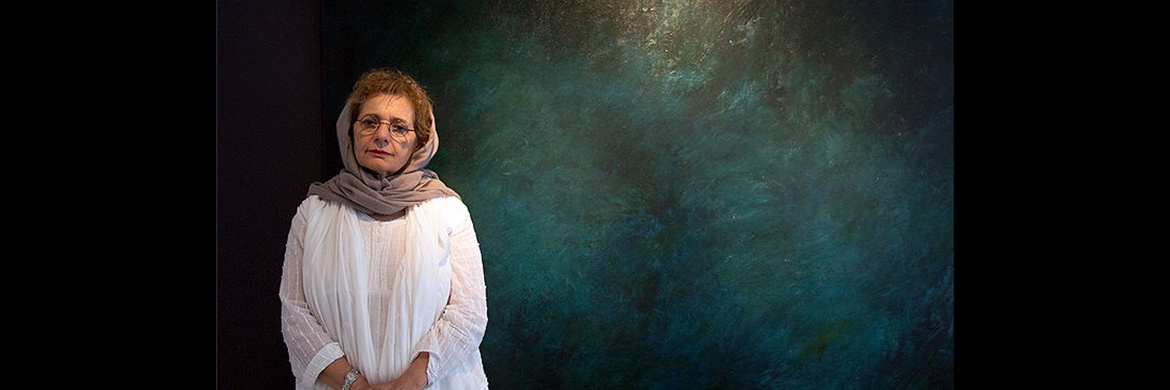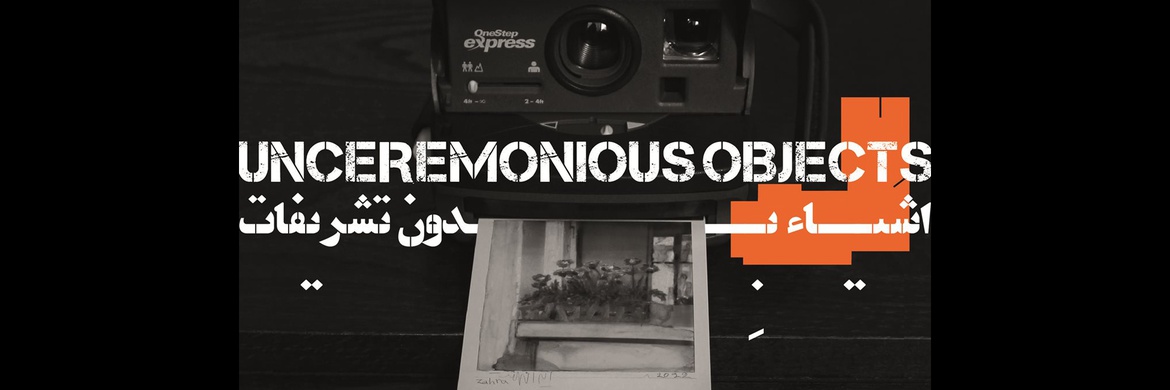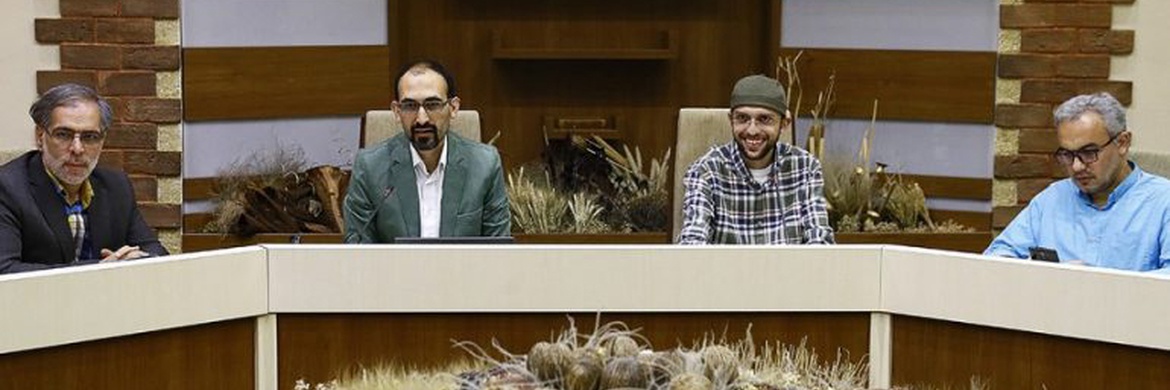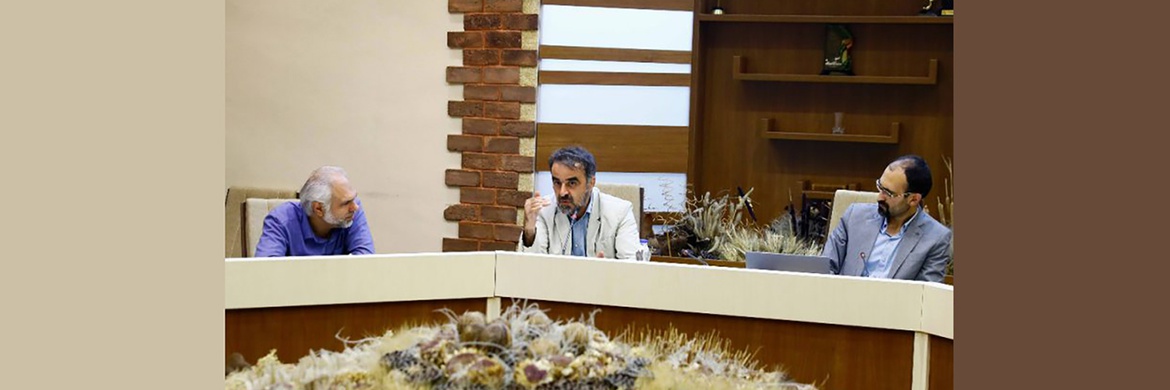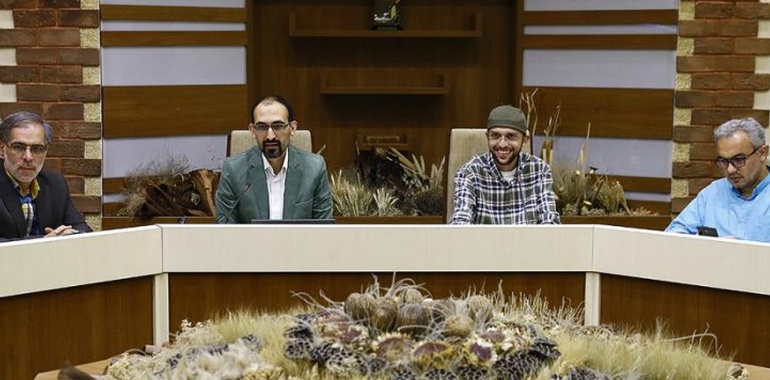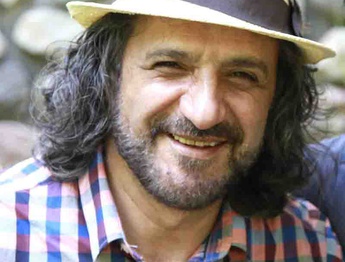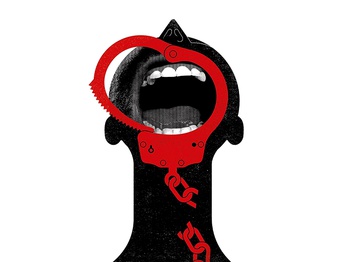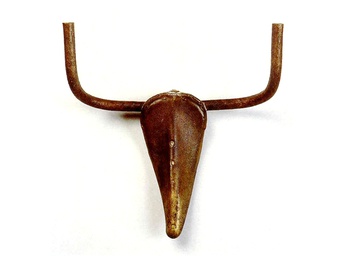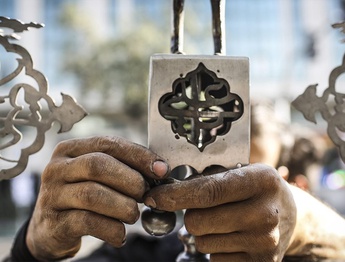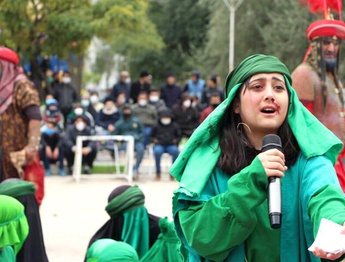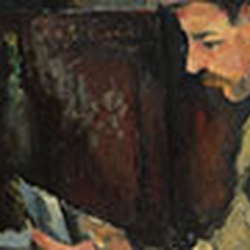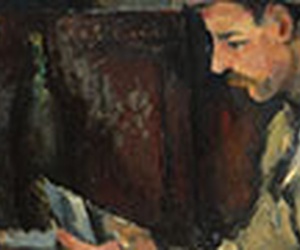The thirty-sixth meeting of art and thought "Deedar" with the title "Epic story in the epic house", on Monday, may 2, with the presence of Dr. Ali Davoudi, a poet and painter; Mohammad Samadi, graphic artist and art expert; Arslan Ayazzadeh, designer and art teacher, together with Mohammad Reza Vahidzadeh, art researcher and secretary of the meeting, examined and analyzed the panoramic painting of Khorramshahr in the Holy Defense Museum by Nasser Palangi.
Mohammad Reza Vahidzadeh, a researcher in the field of art, said at the beginning of the meeting: The art of the revolution has had a serious presence in important social scenes since its inception until today. A work like Khorramshahr panoramic painting should also be evaluated in the continuation of the same approach of revolutionary art. But really, why are big projects like this work not seen and taken seriously?
The panoramic painting of Khorramshahr was released in 2015, and according to the statements, it took five years to produce it, but unfortunately, it has been a year since the exhibition of the mentioned work has been stopped, and it seems that the upper floor of the Holy Defense Museum is basically not working. Even some museum workers did not know about this. It is heard that the upper floor of the Holy Defense Museum is going to be changed and something else will happen in this museum. The question is, why is a work with the size and importance of Khorramshahr panoramic painting ignored?
Mohammad Samadi, a graphic artist and art expert, further said: A work in the dimensions of Khorramshahr's panoramic painting, with significant marginal advertisements, existed in Tehran until a few days ago, but none of us had seen it and had not even heard of it. I noticed by reviewing the news prepared about the said work, if we give them as data to an analysis program, the repetition of some words can be clearly seen. These words will be national project, hectare, square meter, Middle East and Turkey, so the related news will not give much information to the audience about how the work was formed. And maybe this issue makes the super art projects produced in the art space of the Islamic Revolution, as they should and maybe not be seen and influential.
He added: "I don't know when the desire for big and national projects arose among our managers and how long it will continue." Where does it come from that our managers really like to take pictures and give interviews next to national projects in navy suits?
This art expert stated: I think that none of the artworks that were created with the theme of Khorramshahr and remained in my mind were not big projects. All these works were ordinary, but they were produced in an effective atmosphere, for example, in the field of cinema, Bellamy to the Beach is considered a lasting work, which is never a pretentious work.
The atmosphere of the Holy Defense Museum is very disturbing to me
Samadi went on to say: "Maybe I haven't seen the panoramic painting of Khorramshahr because the atmosphere of the Holy Defense Museum is very disturbing to me." This museum is extremely bad in terms of construction, space, architecture, etc. It seems that there was a strong enthusiasm for technology among managers and designers at the time of its construction. Excessive use of light and technologies, which are not very new and are mostly tools, is very evident in the Holy Defense Museum.
He added: We have established a number of holy defense museums throughout our country, none of whose standards reach the standards of the contemporary art museum. The standard of the contemporary art museum has not been repeated over the years and with the advent of different techniques. It is strange that before the construction of any museum, a number of people go to different countries to conduct research, but after returning, they do not get good and appropriate results.
In short, what is seen in the painting of war is not necessarily fighting and killing
Vahidzadeh said: Some people compare the works of art of the Islamic Revolution with the works of artists of revolutions such as the Mexican Revolution, but in my opinion, this comparison is not correct. The works of the artists of the Islamic revolution give special importance to the people, and this criterion is not seen in the works of the artists of other revolutions. These works have a respectful view of people and respect them. Unlike other examples in which people are massed and sometimes they are reduced to the extent of a tool and an agent to advance another goal. This is a component that Palangi himself and his other painter friends have established in the art of the Islamic Revolution of Iran. However, I see the mentioned element absent in the panoramic painting of Khorramshahr.
Dr. Ali Davoudi, a poet and painter, said: War is the oldest phenomenon among human societies. Until a few decades ago, man and war co-existed, and as much as we have life, we have death, and part of death is due to war, therefore war works are among the oldest works of art. We see conflict and killing in all these works, but what is behind the curtain and the final outcome of this killing? By comparing the works of art of China and Africa, we get to know two different civilizations with their own heroes. This also applies to Iran.
He added: Nasser Palangi is the most outstanding artist of the art of war and revolution. We have only one painting in Hosseinieh Jamaran, which is the biggest cultural bastion of the Islamic Revolution, and it is the work of Mr. Palangi.
This painter said: We have war and war painting. In the same way that the definition of our war is different from the world war, our war painting is also different from the world war painting. We have a phenomenon called holy defense, according to which the topics of defense and sanctity are raised.
Davodi said: In short, what we see in the painting of war, although the definition of war is killing, it is not necessarily killing and bloodshed. When we see the faces of martyrs in our war artworks, we do not feel war and killing. When art aims to introduce a hero with his different dimensions, he reaches for artistic elements. This is in the case that no artistic features can be seen in the panoramic painting of Khorramshahr. This work is merely a representation of the introduction of a historical event called the liberation of Khorramshahr and the influential people in it, and it shows their touristic presence in a work of art. Therefore, it has no place for people as a painting. In creating the mentioned work, the artist has decided to use the available technology and minimum facilities.
The panoramic painting of Khorramshahr as a photomontage work has many flaws
Vahidzadeh said: "It seems that the magnificent effect of Khorramshahr's panoramic painting will increase its amazingness and bewilderment by coming into contact with new techniques." Has his creator been successful in this task and has he been able to use the techniques we are looking for well and be associated with the technical and artistic events of the day in a suitable way?
Arslan Ayazzadeh, a designer and art teacher, said: Basically, when we examine a work like the panoramic painting of Khorramshahr, and see what technique was used to create it, we realize that we expect more from the said work than the extent of its use of the new sciences that are defined today.
He added: If we want to look at the panoramic painting of Khorramshahr as a photomontage work, we will see many flaws. By focusing on the components of this illustrative work, we are faced with a work that uses the laws of physics against the laws of physics. I always say that if you want to create a surreal effect, you need the laws of physics so that you can see the facts of the effect and the event in question. In fact, many of the issues and events raised in movies are not true, but they are usually expressed in a way that they are believable.
This designer stated: Many events have happened in the panoramic painting of Khorramshahr, and basically the way it is executed and the way the artist interacts with them are very different.
Symbolic and spiritual aspects are not seen in the panoramic painting of Khorramshahr
Vahidzadeh said: After listening to the words of the experts, I am going back and forth between the text and the hypertext of the panoramic painting of Khorramshahr. On the one hand, I consider the above work to be a good work compared to the conditions of its creation, but on the other hand, I have expectations from it and its creator. This visual work is related to a historical period and is about a place called Khorramshahr, by an artist named Nasser Palangi. As Davoudi said, Naser Palangi is one of the most important artists in the history of our revolution, and by creating an image, he has created a mental picture of the concepts of sacrifice and martyrdom for our generation and raises expectations in the audience. In his interviews, he said that the difference between works such as Khorramshahr's panoramic painting and other works of art is that they pay attention to symbols and spirituality. As someone who cares about form and is familiar with how to read symbols in a work of art, I do not see symbolism and spirituality in the said work. Even with the spread of the characters on the surface of the work, my eye cannot find a focus point, and contrary to the claims made, I do not see presence and absence, appearance and inwardness in it.
Naser Palangi emphasizes that he was 23 years old when he painted the Khorramshahr mosque. After the liberation of Khorramshahr, he makes a pact with the defenders of Khorramshahr and says that he will do something for this city. I am a painter and I can paint, and in those turbulent days when the city was under enemy fire, he stood next to the walls of Khorramshahr Mosque and created beautiful scenes that became a part of our history and national identity.
What will happen to a leopard who was 57 years old at the time of creating the Khorramshahr panoramic painting, with a bag of artistic experiences and possessions, he cannot meet the expectations of his audience today?
Mohammad Samadi said: Like you, I do not see a symbol and spirituality in the painting of Khorramshahr. Basically, such a work does not need to draw pictures of well-known people to convey its message. I used the composition of the national project in my initial talks. Officials think that every work that has a national theme is considered a national project, but this is not the case. The national project has coordinates and the creator must use all the national capacities in its implementation and have a civilizational view so that his work has words for history and for tomorrow. We do not see these coordinates in our desired effect.
He added: works of art are created in a revolutionary atmosphere for 3 reasons. Some of these works are produced with a pure intention and for sacred purposes, which have separate tasks. We have strong and weak works among the mentioned works.
Some other works of art are created for people. The purpose of producing these works is to attract the majority of people. These works are also strong and weak.
The third category of artworks are created for managers, clients, resumes and work reports. Among these works, there are strong and weak works.
By putting the panoramic painting of Khorramshahr in my formula, I think this work was created for managers. This suspicion was strengthened by reading Nasser Pelangi's interviews.
This graphic artist stated: Some fields are not the playground of Islamic revolution artists. The human race of Khomeini's era does not fit into many formats. This kind of thing doesn't fit in "Salaam Commander" either, but since it's not our topic, I won't get into it either. No one thinks about the branding made by the cultural front of the revolution for future generations. No one imagines how hard it will be to erase the stigma of bad taste on the works of revolution artists.
Samadi said: We have entered into a ridiculous double game between "the expulsions" and "the separation of Nader from Simin". That land is not the playground of the artist of the Islamic Revolution.
He continued: "The most militant words that have been said to us in the Shia space have remained unfinished." These words have reached us easily through history, but our current artists think that in order to convey their message to the future generations, they should use the ways defined by Hollywood. Our art is challenged by newly defined ways of conveying a message.
This art expert said: Kazem Chalipa has a unique work called Basiji, which I look at once a month and tell myself how Chelipa was when he painted this work. The mentioned work can be a balance for the paintings of the artists of the revolution.
Painter and poet Ali Davoudi further said: Photoshop and Google have developed technology, and I am not against using modern technologies, but some idealistic friends have a very special view of modern technologies in order to convey their message to the audience.
He added: I am determined not to underestimate the greatness of Naser Palangi's work, because his work with all its flaws is a very heavy work, but I believe that such works, despite their greatness, are illustrations, not paintings. Painting is fundamentally something else.
This painter asked: Is the liberation of Khorramshahr a glorious and proud national event for us or not? Should we look at it as a street-field historical incident?
If an image like a panoramic painting of Khorramshahr was created about people leaving the stadium, we would not have much objection to it, but drawing such a picture about Khorramshahr requires precision.
At the end of the meeting, Davoudi emphasized: According to what I said, even if all the principles of realism painting can be seen in the panoramic painting of Khorramshahr, this work will still not succeed in showing the various aspects of the liberation of Khorramshahr. According to himself, one day Naser Palangi was in the heart of the story and created amazing scenes on the walls of the Khorramshahr Mosque, but another day he traveled to a country and took a sample of the panorama there to create a work. This is the difference between the artist's work in different time periods. The belief of the artist has changed in the second time period and art is nothing but belief.
